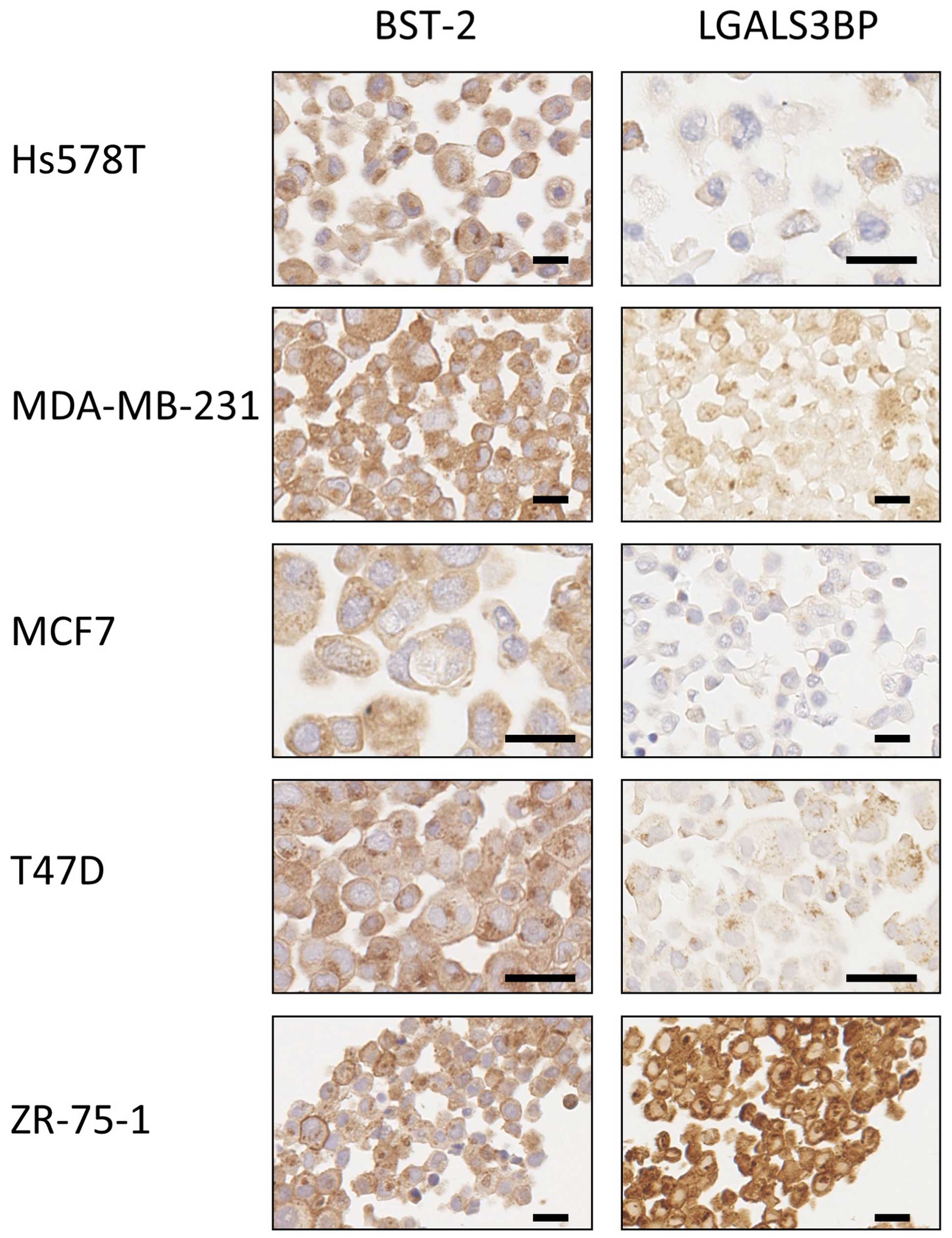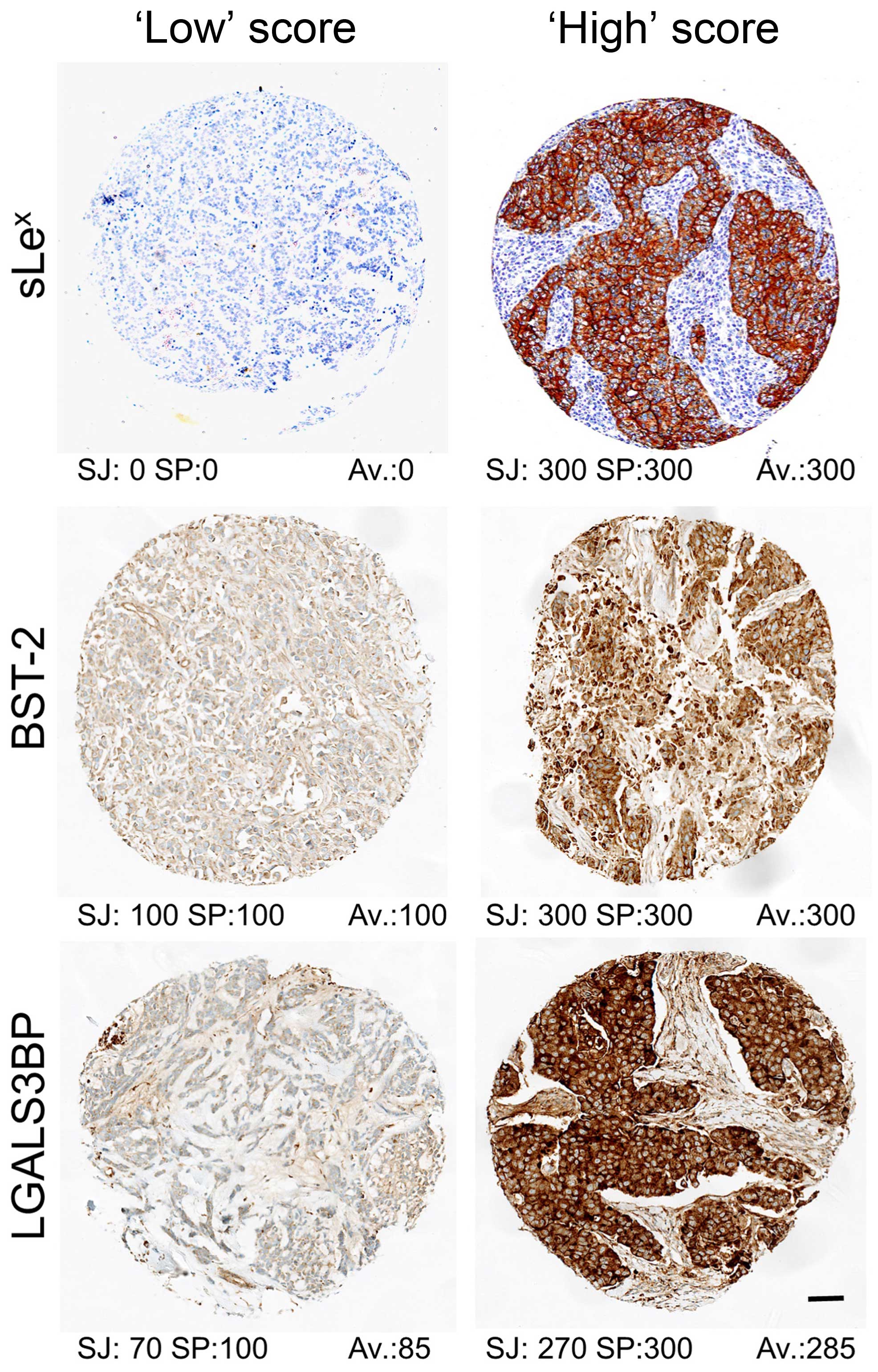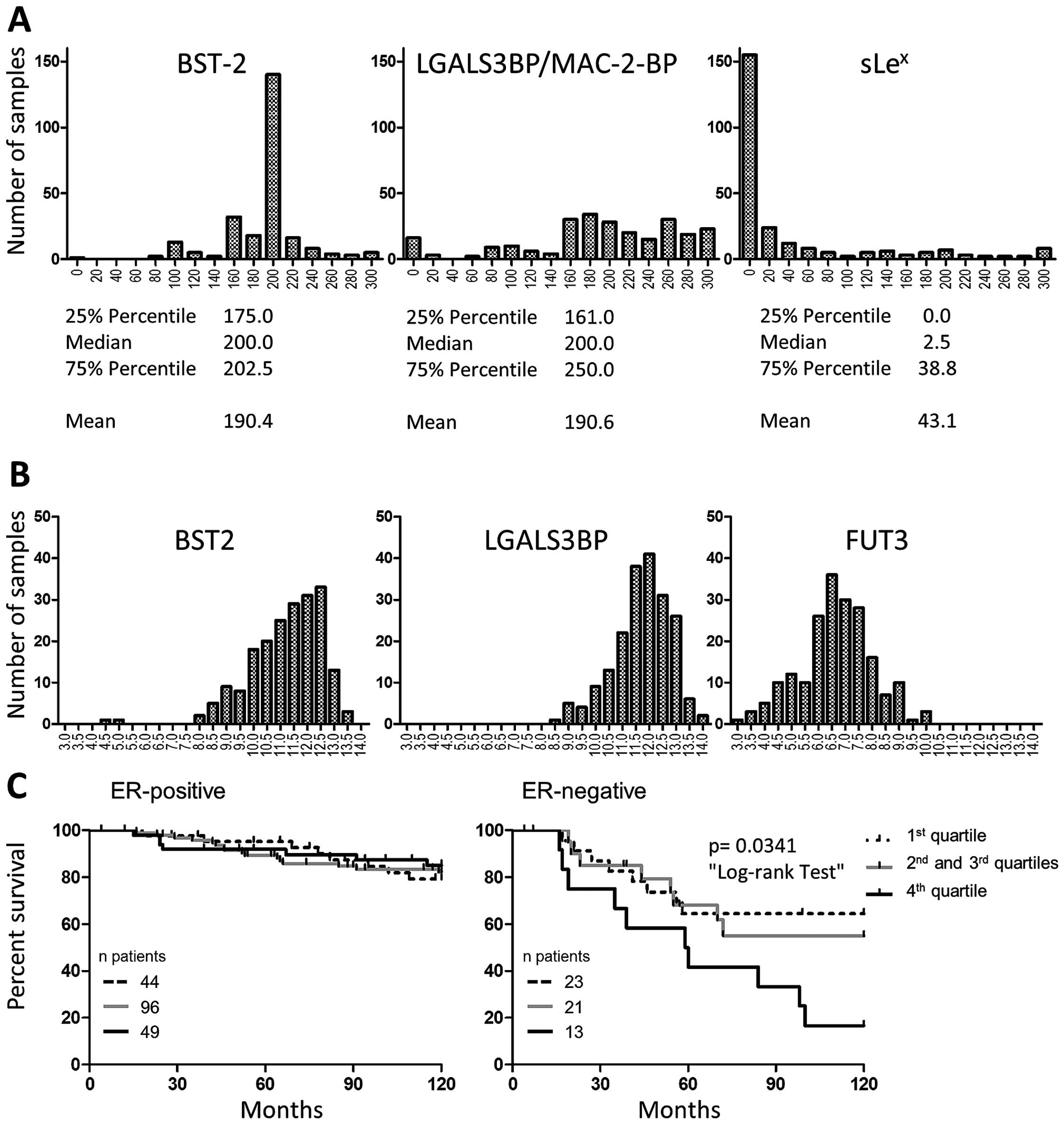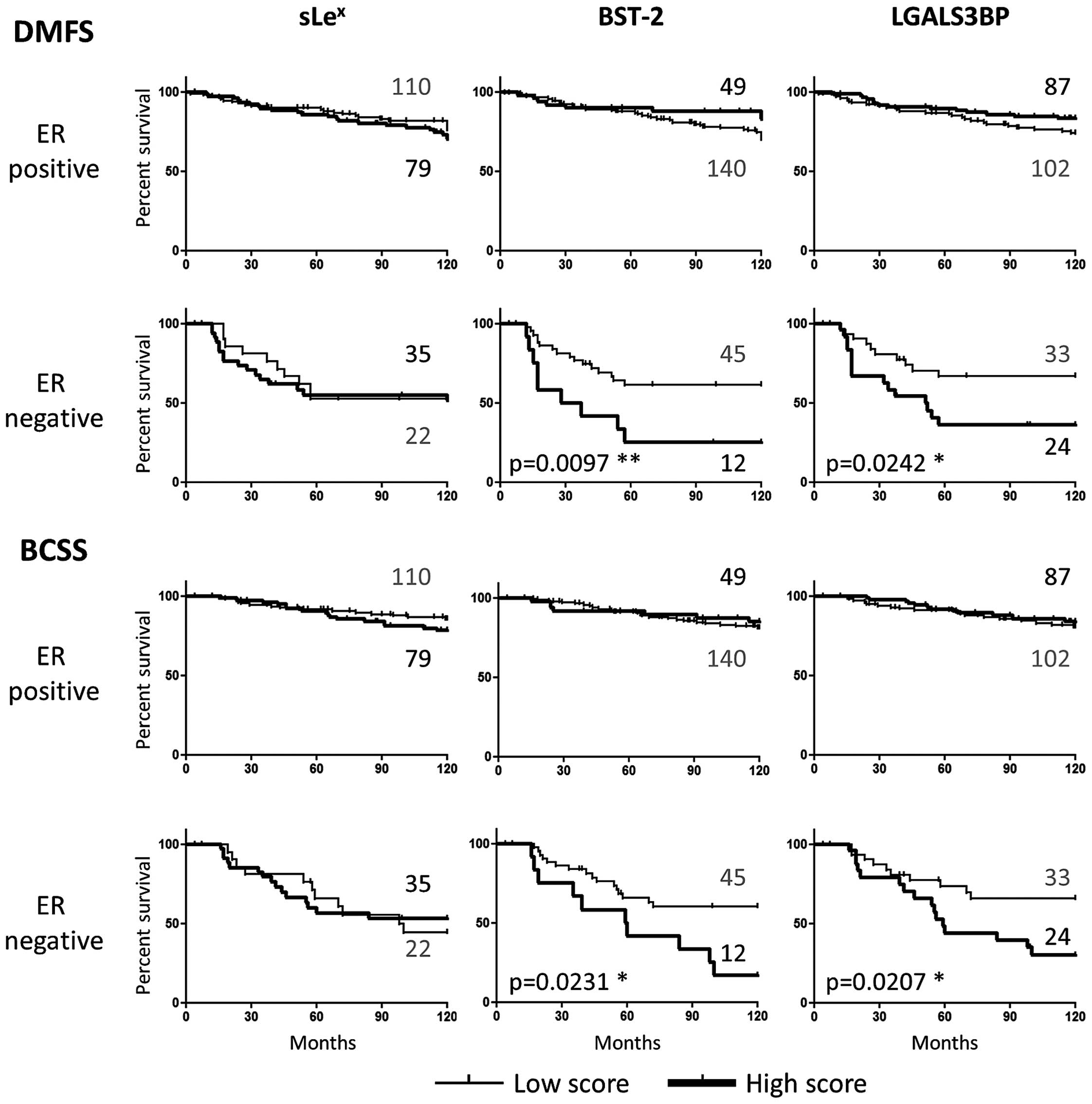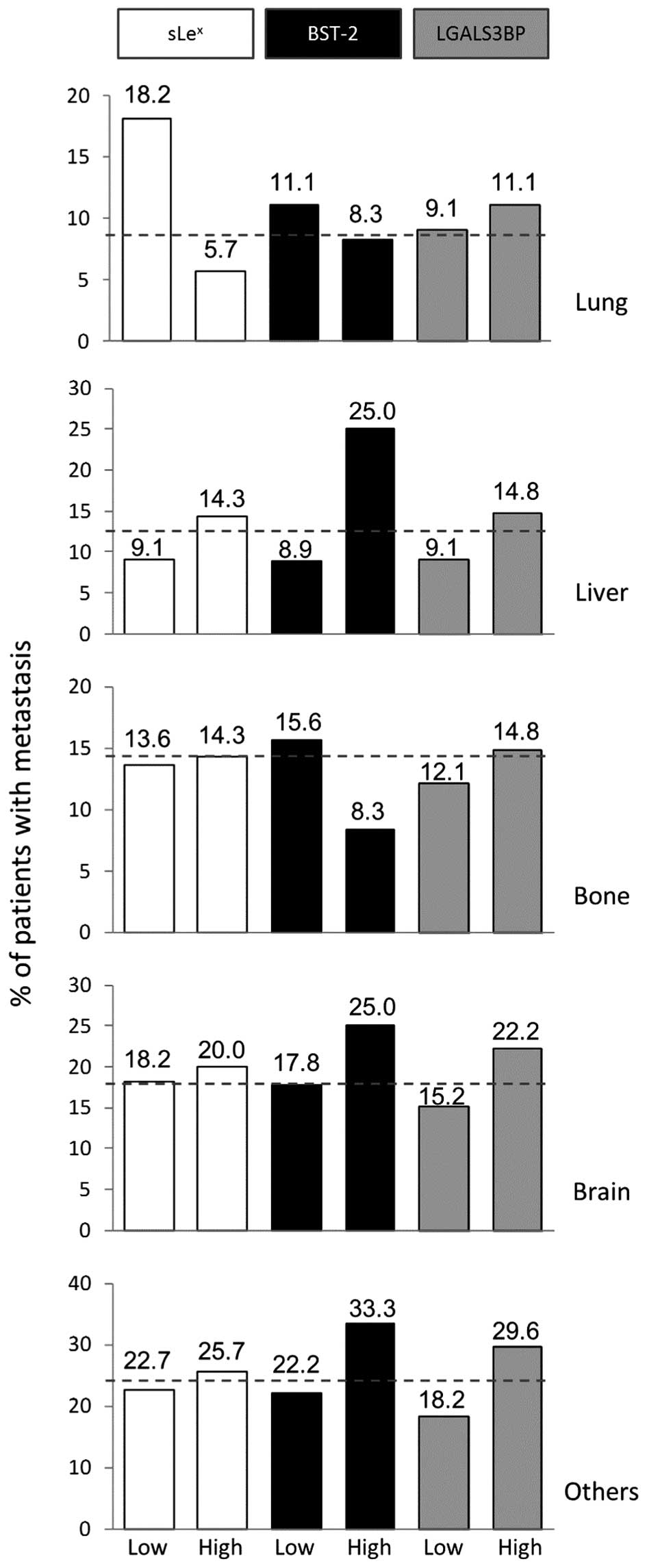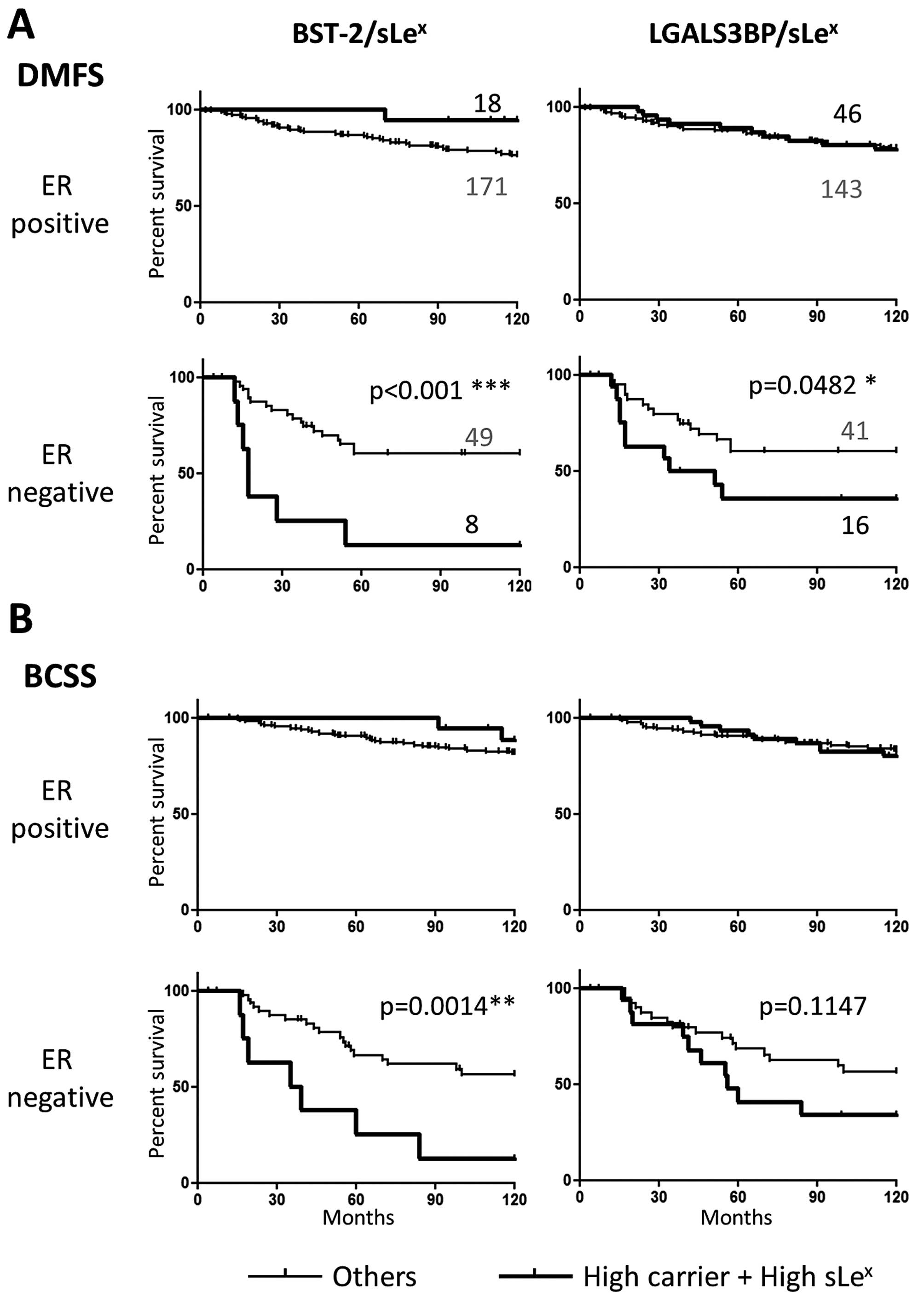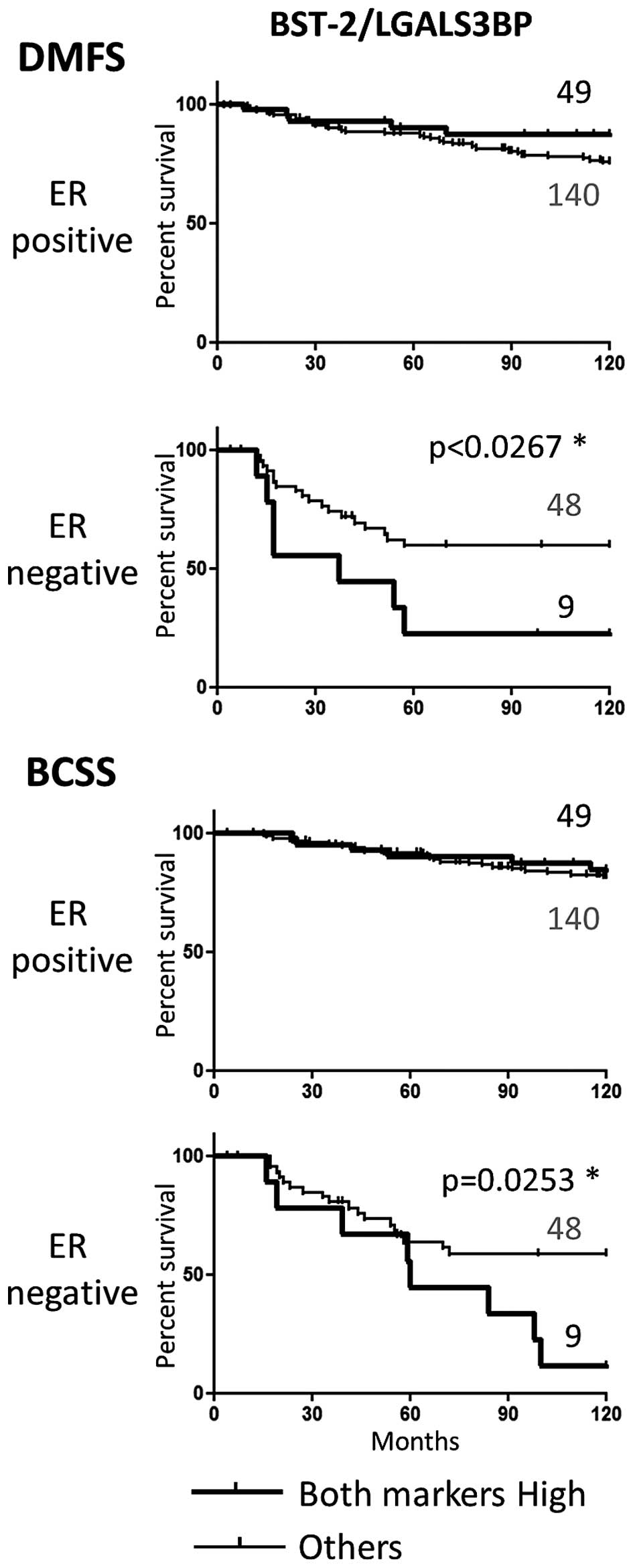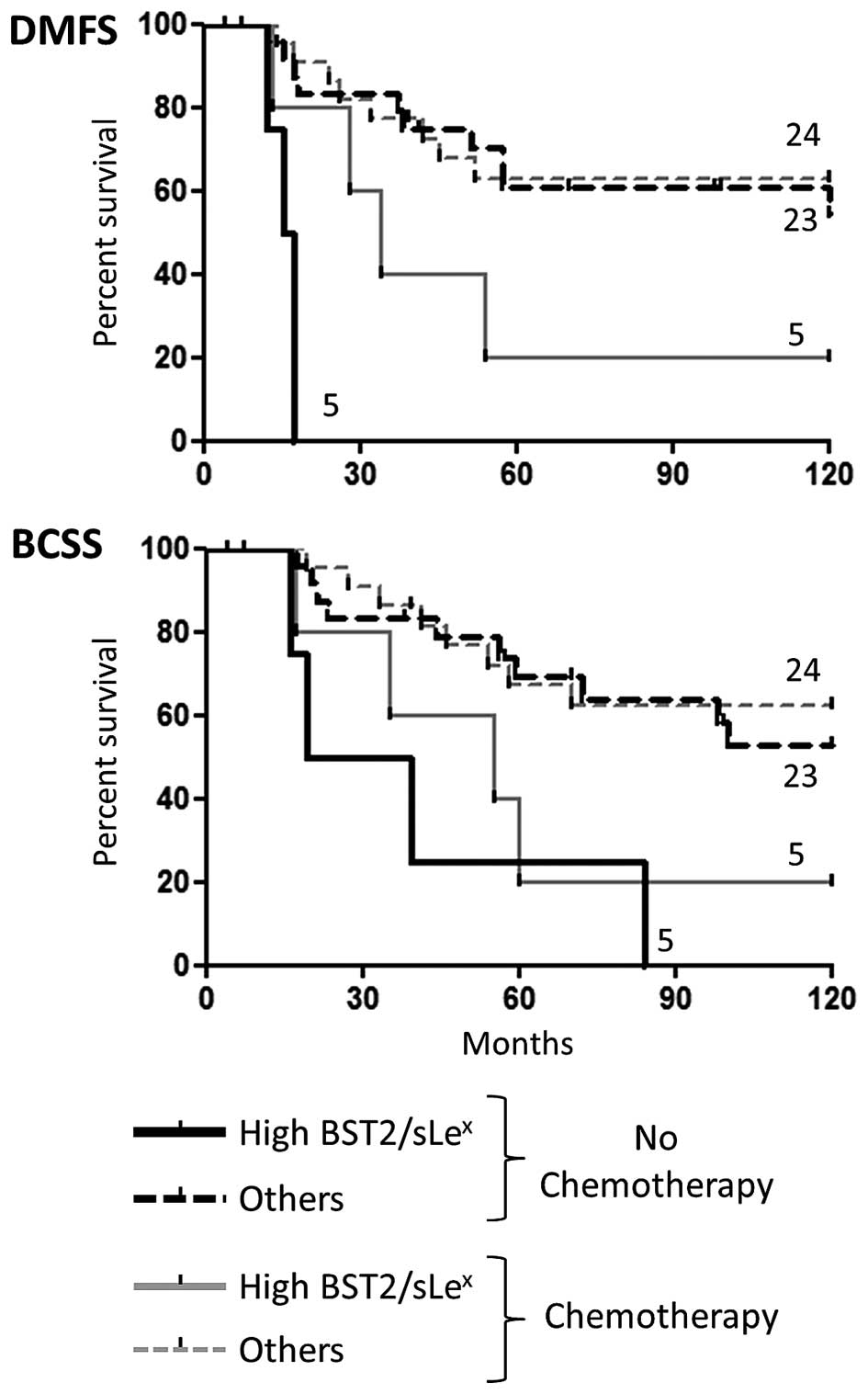|
1
|
Howlader N, Noone A, Krapcho M, et al:
SEER Cancer Statistics Review. National Cancer Institute; 2011
|
|
2
|
Chaffer CL and Weinberg RA: A perspective
on cancer cell metastasis. Science. 331:1559–1564. 2011. View Article : Google Scholar : PubMed/NCBI
|
|
3
|
St Hill CA: Interactions between
endothelial selectins and cancer cells regulate metastasis. Front
Biosci (Landmark Ed). 16:3233–3251. 2011. View Article : Google Scholar
|
|
4
|
Kawamura YI, Adachi Y, Curiel DT,
Kawashima R, Kannagi R, Nishimoto N and Dohi T: Therapeutic
adenoviral gene transfer of a glycosyltransferase for prevention of
peritoneal dissemination and metastasis of gastric cancer. Cancer
Gene Ther. 21:427–433. 2014. View Article : Google Scholar : PubMed/NCBI
|
|
5
|
Komatsu H, Mizuguchi S, Izumi N, Chung K,
Hanada S, Inoue H, Suehiro S and Nishiyama N: Sialyl Lewis X as a
predictor of skip N2 metastasis in clinical stage IA non-small cell
lung cancer. World J Surg Oncol. 11:3092013. View Article : Google Scholar : PubMed/NCBI
|
|
6
|
Gakhar G, Navarro VN, Jurish M, Lee GY,
Tagawa ST, Akhtar NH, Seandel M, Geng Y, Liu H, Bander NH, et al:
Circulating tumor cells from prostate cancer patients interact with
E-selectin under physiologic blood flow. PLoS One. 8:e851432013.
View Article : Google Scholar
|
|
7
|
Julien S, Ivetic A, Grigoriadis A, QiZe D,
Burford B, Sproviero D, Picco G, Gillett C, Papp SL, Schaffer L, et
al: Selectin ligand sialyl-Lewis x antigen drives metastasis of
hormone-dependent breast cancers. Cancer Res. 71:7683–7693. 2011.
View Article : Google Scholar : PubMed/NCBI
|
|
8
|
Shirure VS, Reynolds NM and Burdick MM:
Mac-2 binding protein is a novel E-selectin ligand expressed by
breast cancer cells. PLoS One. 7:e445292012. View Article : Google Scholar : PubMed/NCBI
|
|
9
|
Crother TR, Schröder NWJ, Karlin J, Chen
S, Shimada K, Slepenkin A, Alsabeh R, Peterson E and Arditi M:
Chlamydia pneumoniae infection induced allergic airway
sensitization is controlled by regulatory T-cells and plasmacytoid
dendritic cells. PLoS One. 6:e207842011. View Article : Google Scholar : PubMed/NCBI
|
|
10
|
Patani N, Martin L-A and Dowsett M:
Biomarkers for the clinical management of breast cancer:
International perspective. Int J Cancer. 133:1–13. 2013. View Article : Google Scholar : PubMed/NCBI
|
|
11
|
Pinder SE, Brown JP, Gillett C, Purdie CA,
Speirs V, Thompson AM and Shaaban AM: The manufacture and
assessment of tissue microarrays: Suggestions and criteria for
analysis, with breast cancer as an example. J Clin Pathol.
66:169–177. 2013. View Article : Google Scholar
|
|
12
|
Julien S, Ivetic A, Grigoriadis A, QiZe D,
Burford B, Sproviero D, Picco G, Gillett C, Papp SL, Schaffer L, et
al: Selectin ligand sialyl-Lewis x antigen drives metastasis of
hormone-dependent breast cancers. Cancer Res. 71:7683–7693. 2011.
View Article : Google Scholar : PubMed/NCBI
|
|
13
|
Becker R, Lenter MC, Vollkommer T, Boos
AM, Pfaff D, Augustin HG and Christian S: Tumor stroma marker
endosialin (Tem1) is a binding partner of metastasis-related
protein Mac-2 BP/90K. FASEB J. 22:3059–3067. 2008. View Article : Google Scholar : PubMed/NCBI
|
|
14
|
Tinari N, Kuwabara I, Huflejt ME, Shen PF,
Iacobelli S and Liu FT: Glycoprotein 90K/MAC-2BP interacts with
galectin-1 and mediates galectin-1-induced cell aggregation. Int J
Cancer. 91:167–172. 2001. View Article : Google Scholar : PubMed/NCBI
|
|
15
|
Piccolo E, Tinari N, Semeraro D, Traini S,
Fichera I, Cumashi A, La Sorda R, Spinella F, Bagnato A, Lattanzio
R, et al: LGALS3BP, lectin galactoside-binding soluble 3 binding
protein, induces vascular endothelial growth factor in human breast
cancer cells and promotes angiogenesis. J Mol Med Berl. 91:83–94.
2013. View Article : Google Scholar
|
|
16
|
Inohara H, Akahani S, Koths K and Raz A:
Interactions between galectin-3 and Mac-2-binding protein mediate
cell-cell adhesion. Cancer Res. 56:4530–4534. 1996.PubMed/NCBI
|
|
17
|
Tinari N, Lattanzio R, Querzoli P, Natoli
C, Grassadonia A, Alberti S, Hubalek M, Reimer D, Nenci I, Bruzzi
P, et al; Consorzio Interuniversitario Nazionale per la
Bio-Oncologia (CINBO). High expression of 90K (Mac-2 BP) is
associated with poor survival in node-negative breast cancer
patients not receiving adjuvant systemic therapies. Int J Cancer.
124:333–338. 2009. View Article : Google Scholar
|
|
18
|
Largillier R, Ferrero J-M, Doyen J,
Barriere J, Namer M, Mari V, Courdi A, Hannoun-Levi JM, Ettore F,
Birtwisle-Peyrottes I, et al: Prognostic factors in 1,038 women
with metastatic breast cancer. Ann Oncol. 19:2012–2019. 2008.
View Article : Google Scholar : PubMed/NCBI
|
|
19
|
Foekens JA, Klijn JG, Natoli C, van Putten
WL, Di Stefano P, Look MP, Portengen H and Iacobelli S: Expression
of tumor-associated 90K-antigen in human breast cancer: No
correlation with prognosis and response to first-line therapy with
tamoxifen. Int J Cancer. 64:130–134. 1995. View Article : Google Scholar : PubMed/NCBI
|
|
20
|
Grassadonia A, Tinari N, Iurisci I,
Piccolo E, Cumashi A, Innominato P, D'Egidio M, Natoli C, Piantelli
M and Iacobelli S: 90K (Mac-2 BP) and galectins in tumor
progression and metastasis. Glycoconj J. 19:551–556. 2004.
View Article : Google Scholar : PubMed/NCBI
|
|
21
|
Mahauad-Fernandez WD, DeMali KA, Olivier
AK and Okeoma CM: Bone marrow stromal antigen 2 expressed in cancer
cells promotes mammary tumor growth and metastasis. Breast Cancer
Res. 16:4932014. View Article : Google Scholar : PubMed/NCBI
|
|
22
|
Cai D, Cao J, Li Z, Zheng X, Yao Y, Li W
and Yuan Z: Up-regulation of bone marrow stromal protein 2 (BST2)
in breast cancer with bone metastasis. BMC Cancer. 9:1022009.
View Article : Google Scholar : PubMed/NCBI
|
|
23
|
Sayeed A, Luciani-Torres G, Meng Z,
Bennington JL, Moore DH and Dairkee SH: Aberrant regulation of the
BST2 (Tetherin) promoter enhances cell proliferation and apoptosis
evasion in high grade breast cancer cells. PLoS One. 8:e671912013.
View Article : Google Scholar : PubMed/NCBI
|
|
24
|
Yi EH, Yoo H, Noh KH, Han S, Lee H, Lee
JK, Won C, Kim BH, Kim MH, Cho CH, et al: BST-2 is a potential
activator of invasion and migration in tamoxifen-resistant breast
cancer cells. Biochem Biophys Res Commun. 435:685–690. 2013.
View Article : Google Scholar : PubMed/NCBI
|
|
25
|
Billcliff PG, Rollason R, Prior I, Owen
DM, Gaus K and Banting G: CD317/tetherin is an organiser of
membrane micro-domains. J Cell Sci. 126:1553–1564. 2013. View Article : Google Scholar : PubMed/NCBI
|
|
26
|
Milde-Langosch K, Schütze D,
Oliveira-Ferrer L, Wikman H, Müller V, Lebok P, Pantel K, Schröder
C, Witzel I and Schumacher U: Relevance of βGal-βGalNAc-containing
glycans and the enzymes involved in their synthesis for invasion
and survival in breast cancer patients. Breast Cancer Res Treat.
151:515–528. 2015. View Article : Google Scholar : PubMed/NCBI
|
|
27
|
Teschendorff AE and Caldas C: A robust
classifier of high predictive value to identify good prognosis
patients in ER-negative breast cancer. Breast Cancer Res.
10:R732008. View Article : Google Scholar : PubMed/NCBI
|
|
28
|
Stübke K, Wicklein D, Herich L, Schumacher
U and Nehman N: Selectin-deficiency reduces the number of
spontaneous metastases in a xenograft model of human breast cancer.
Cancer Lett. 321:89–99. 2012. View Article : Google Scholar : PubMed/NCBI
|
|
29
|
Eccles SA, Aboagye EO, Ali S, Anderson AS,
Armes J, Berditchevski F, Blaydes JP, Brennan K, Brown NJ, Bryant
HE, et al: Critical research gaps and translational priorities for
the successful prevention and treatment of breast cancer. Breast
Cancer Res. 15:R922013. View Article : Google Scholar : PubMed/NCBI
|
|
30
|
Desmedt C, Piette F, Loi S, Wang Y,
Lallemand F, Haibe-Kains B, Viale G, Delorenzi M, Zhang Y,
D'Assignies MS, et al: Strong time dependence of the 76-gene
prognostic signature for node-negative breast cancer patients in
the TRANSBIG multicenter independent validation series. Clin Cancer
Res. 13:3207–3214. 2007. View Article : Google Scholar : PubMed/NCBI
|















